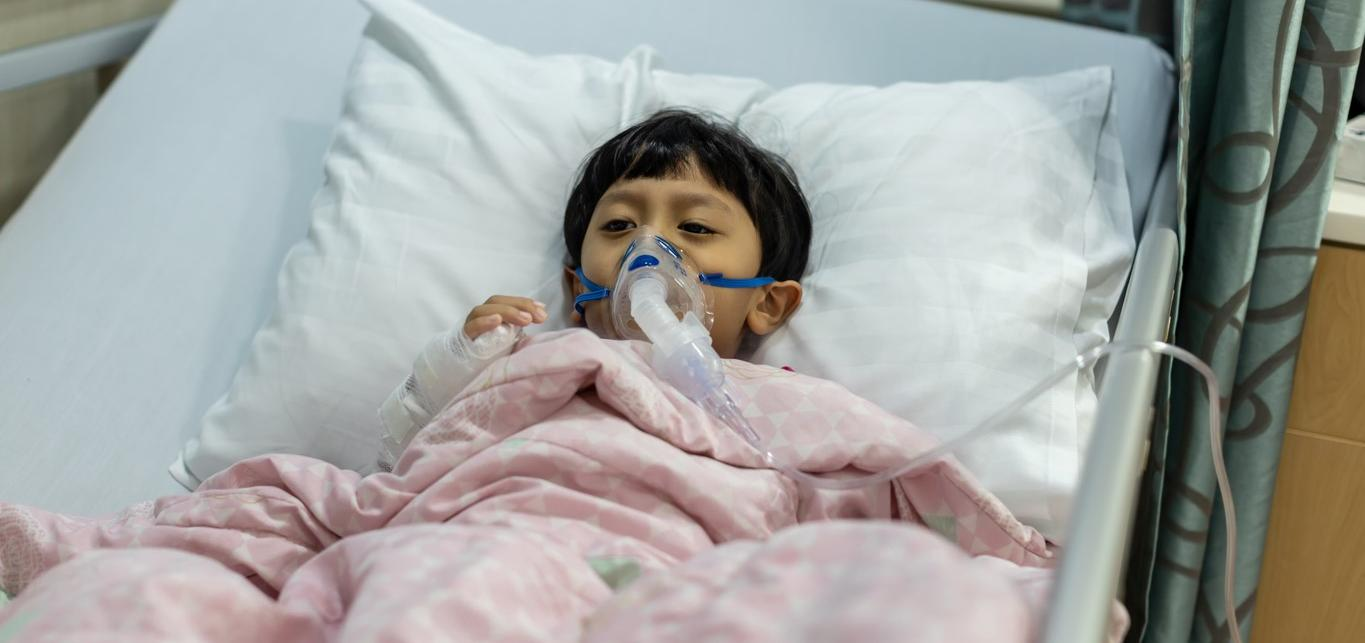- The cause of severe pneumonia cases reported in Argentina has been linked to a rise is psittacosis, a respiratory disease from a bacteria known to infect birds, the country's health ministry said an April 20 statement. The infections were mainly reported in the Buenos Aires metropolitan area. The ministry said no non-subtypable influenza A viruses were found, no were any unusual respiratory viruses. Cases of mycoplasma pneumonia and chlamydia pneumonia were found, but not in greater-than-expected numbers. In early March, the World Health Organization (WHO) posted an alert about an unexpected rise in psittacosis cases in five European countries.
- Three more people have been hurt by reactions linked to counterfeit or mishandled Botox injections, raising the number to 22 in 11 states, the Centers for Disease Control and Prevention (CDC) said in an April 19 update. Two more states reported cases: California and Texas. Two more people were hospitalized, bringing that number to 11. Six people have been treated with botulism antitoxin. Of seven people tested for botulism, tests were negative for six and are pending for one.
- Four more measles cases have been reported to the CDC, raising the national total to 125 from 18 jurisdictions, the CDC said in its latest weekly update. The number of outbreaks remained at seven, and 69% of the cases this year have been linked to outbreaks. Children younger than 5 years make up 46% of cases, with older children at 22% and adults at 32%. Of the illnesses reported, 54% of patients were hospitalized for isolation purposes or to manage disease complications.
Quick takes: Psittacosis in Argentina, more counterfeit Botox reactions, US measles cases rise
Hospitalizations for RSV rose in 2021, 2022 for preschoolers

A study published late last week in JAMA Network Open finds that, among US preschoolers, the rate of respiratory syncytial virus (RSV) hospitalizations and intensive care unit (ICU) cases rose in 2021 and 2022 during the COVID-19 pandemic compared with 2015 to 2019, with the greatest increase in those 2 to 5 years old.
The retrospective cohort study included 924,061 children younger than 5 years diagnosed with RSV and bronchiolitis at 50 children’s hospitals in 10 geographic regions across the United States.
Before the COVID-19 pandemic, RSV had a seasonal peak in North America, but in the winters of 2020 and 2021, there was a dip in cases as COVID mitigation efforts also reduced and altered transmission patterns of RSV. In 2021 and 2022, the virus appeared to peak early in several states and to cause more severe illness.
20% of hospitalized kids needed ICU care
The average age of participants was 8 months, 58.0% were male, and 37.7% were diagnosed with RSV, with 54.0% of those diagnosed with the virus needing hospitalization.
Hospitalization rates rose for all age-groups in 2021 and 2022 compared to the prepandemic period, with children aged 2 to 5 years 4.86 (95% confidence interval [CI], 4.75 to 4.98) times more likely to be hospitalized in 2022 than in 2015 to 2019. Infants aged 0 to 5 months were 1.77 (95% CI, 1.74 to 1.80) times as likely to be hospitalized.
RSV was also tied to more ICU use in the study, with a higher portion (19.7%) of kids with RSV admitted to ICUs than those with non-RSV bronchiolitis (8.6%).
The increased incidence of RSV among older children "has implications for newly available prevention strategies (eg, monoclonal antibodies), for which older children are not currently eligible," the authors concluded.
Study finds higher death risk in Black women with multidrug-resistant bloodstream infections

A nationwide analysis of US patients hospitalized with bloodstream infections (BSIs) caused by carbapenem-resistant Enterobacterales (CRE) found that Black women had an increased risk of death compared with White women and Black men.
The analysis, which will be presented later this month at the European Society of Clinical Microbiology and Infectious Diseases (ESCMID) Global Congress in Barcelona, Spain, analyzed data on patients enrolled in the second Consortium on Resistance Against Carbapenems in Klebsiella and Other Enterobacterales (CRACKLE-2) study who had a BSI caused by CRE and were listed as Black or White. The investigators used multivariable logistic regression models that adjusted for age, BSI source, liver disease, and hospital-onset to determine whether race and sex were associated with 30-day mortality.
Of the 362 patients included, 117 (32%) were Black and 60 (17%) were Black women. Black patients were more likely than White patients to be admitted to the hospital from long-term care facilities (32% vs 20%), to have peripheral vascular (17% vs 6%) or cerebrovascular disease (26% vs 12%), and to be hemodialysis-dependent (17% vs 8%), while White patients had higher rates of liver disease (17% vs 7%) and malignancy (39% vs 16%).
Interaction of race, sex
Although the multivariable models found that race and sex individually were not associated with 30-day mortality, the interaction of race and sex was an independent predictor of 30-day mortality. Black women had a more than double the risk of 30-day mortality than both White women (adjusted odds ratio [aOR], 2.15; 95% confidence interval [CI], 1.01 to 4.58) and Black men (aOR, 2.59; 95% CI, 1.02 to 6.56).
Lead study author Felicia Ruffin, PhD, of Duke University School of Medicine, called the findings "deeply disturbing."
"Studies are rare that describe these disparities, and our analyses found that it is being both female and Black that is associated with an increased risk of dying," Ruffin said in an ECSMID press release.
While the study didn't address the reason for the disparities, Ruffin suggested it might be linked to the difference in the distribution of comorbid conditions between Black and White patients. She called for further research into the root causes of the disparities.
Studies are rare that describe these disparities, and our analyses found that it is being both female and Black that is associated with an increased risk of dying.
European Medicines Agency approves combination antibiotic for multidrug-resistant infections
Pfizer announced today that the European Medicines Agency (EMA) has granted marketing authorization for Emblaveo (aztreonam-avibactam) for treating a host of multidrug-resistant bacterial infections.
Under the EMA approval, Emblaveo is indicated for the treatment of adults who have complicated intra-abdominal infections, hospital-acquired pneumonia (including ventilator-associated pneumonia), and complicated urinary tract infections (including pyelonephritis), as well as infections caused by aerobic gram-negative organisms in patients who have limited treatment options.
Jointly developed by Pfizer and Abbvie, Emblaveo combines a beta-lactam antibiotic (aztreonam) with a beta-lactamase inhibitor (avibactam). The combination aims to restore aztreonam's activity against gram-negative bacteria that carry two defense mechanisms—metallo-beta-lactamase (MBL) enzymes and other beta-lactamase enzymes—that confer resistance to nearly all currently available antibiotics. While aztreonam can evade degradation by MBLs on its own, the addition of avibactam helps restore its activity against other beta-lactamases.
'New hope' for critically ill patients with resistant infections
The approval is based on the results from two phase 3 trials that evaluated the safety and efficacy of Emblaveo.
"For healthcare teams treating patients with serious Gram-negative bacterial infections, the prospect of running out of effective treatment options is a daunting but very real threat," Yehuda Carmeli, head of the National Institute for Antibiotic Resistance and Infection Control at Tel Aviv Medical Center and an investigator in the phase 3 REVISIT study, said in a Pfizer press release. "The approval of Emblaveo is welcome news for the infectious disease community and provides new hope to critically ill patients affected by antimicrobial resistance."
The marketing authorization is valid in all 27 European Union countries and in Iceland, Liechtenstein, and Norway.
The approval of Emblaveo is welcome news for the infectious disease community and provides new hope to critically ill patients affected by antimicrobial resistance.
Four findings may indicate clinical stability in kids hospitalized for pneumonia

Younger age, absence of vomiting, decreased breath sounds, and normal capillary refilling may indicate clinical stability and discharge readiness in children hospitalized with community-acquired pneumonia (CAP), suggests a study published in Pediatrics.
A team led by a Medical College of Wisconsin researcher collected time-to-clinical stability (TCS) data (temperature, heart rate [HR], respiratory rate [RR], and oxygenation) in 571 patients ages 3 months to 18 years hospitalized for CAP from July 2013 to December 2017.
CAP is one of the top five indications for hospitalization and antibiotic use in children, but while TCS data are well-defined for adults with CAP, only one study has assessed their use in children, the authors noted.
"Objective definitions of medical stability are necessary to optimize the care of children with CAP," they wrote. "Clear, objective definitions of medical stability guide when a patient is safe to be discharged from the hospital, when they can be switched from intravenous (IV) to oral antibiotics, length of the overall antibiotic course, and risk of adverse outcomes after discharge, including mortality or readmission."
Infants most likely to quickly reach stability
Of 571 children, 32.7% had at least one abnormal parameter at hospital release, 7% had two abnormal readings, and none had three or more. All four parameters were stable in 93% of infants at release, compared with 49% of patients aged 12 to 18 years.
TCS may decrease length of stay if implemented to guide discharge decisions.
RR was the least likely factor to reach stability at hospital release (65%), followed by HR (84%), temperature (95%), and oxygenation (97%).
The median TCS for each parameter was less than 24 hours, with younger age, absence of vomiting, diffusely decreased breath sounds, and normal capillary refilling tied to early hospital release. In total, 8.1% of patients revisited the emergency department; patients who didn't reach clinical stability weren't more likely to return.
"A TCS outcome consisting of physiologic variables may be useful for objectively assessing disease recovery and clinical readiness for discharge among children hospitalized with CAP," the researchers concluded. "TCS may decrease length of stay if implemented to guide discharge decisions."











